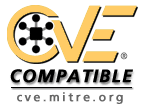Improper Sanitization of Directives in Dynamically Evaluated Code ('Eval Injection') |
| Weakness ID: 95 (Weakness Base) | Status: Incomplete |
Description Summary
Extended Description
This may allow an attacker to execute arbitrary code, or at least modify what code can be executed.
| This weakness is prevalent in handler/dispatch procedures that might want to invoke a large number of functions, or set a large number of variables. |
Example 1
edit-config.pl: This CGI script is used to modify settings in a configuration file.
The script intends to take the 'action' parameter and invoke one of a variety of functions based on the value of that parameter - config_file_add_key(), config_file_set_key(), or config_file_delete_key(). It could set up a conditional to invoke each function separately, but eval() is a powerful way of doing the same thing in fewer lines of code, especially when a large number of functions or variables are involved. Unfortunately, in this case, the attacker can provide other values in the action parameter, such as: add_key(",","); system("/bin/ls"); This would produce the following string in handleConfigAction(): config_file_add_key(",","); system("/bin/ls"); Any arbitrary Perl code could be added after the attacker has "closed off" the construction of the original function call, in order to prevent parsing errors from causing the malicious eval() to fail before the attacker's payload is activated. This particular manipulation would fail after the system() call, because the "_key(\$fname, \$key, \$val)" portion of the string would cause an error, but this is irrelevant to the attack because the payload has already been activated.
| Reference | Description |
|---|---|
| CVE-2008-5071 | Eval injection in PHP program. |
| CVE-2002-1750 | Eval injection in Perl program. |
| CVE-2008-5305 | Eval injection in Perl program using an ID that should only contain hyphens and numbers. |
| CVE-2002-1752 | Direct code injection into Perl eval function. |
| CVE-2002-1753 | Eval injection in Perl program. |
| CVE-2005-1527 | Direct code injection into Perl eval function. |
| CVE-2005-2837 | Direct code injection into Perl eval function. |
| CVE-2005-1921 | MFV. code injection into PHP eval statement using nested constructs that should not be nested. |
| CVE-2005-2498 | MFV. code injection into PHP eval statement using nested constructs that should not be nested. |
| CVE-2005-3302 | Code injection into Python eval statement from a field in a formatted file. |
| CVE-2007-1253 | Eval injection in Python program. |
| CVE-2001-1471 | chain: Resultant eval injection. An invalid value prevents initialization of variables, which can be modified by attacker and later injected into PHP eval statement. |
Phases: Architecture and Design; Implementation If possible, refactor your code so that it does not need to use eval() at all. |
Phase: Implementation Strategy: Input Validation Assume all input is malicious. Use an appropriate combination of black lists and white lists to ensure only valid and expected input is processed by the system. |
Phase: Architecture and Design Do not rely exclusively on blacklist validation to detect malicious input or to encode output (CWE-184). There are too many ways to encode the same character, so you're likely to miss some variants. |
Phase: Implementation Inputs should be decoded and canonicalized to the application's current internal representation before being validated (CWE-180, CWE-181). Make sure that your application does not inadvertently decode the same input twice (CWE-174). Such errors could be used to bypass whitelist schemes by introducing dangerous inputs after they have been checked. Use libraries such as the OWASP ESAPI Canonicalization control. Consider performing repeated canonicalization until your input does not change any more. This will avoid double-decoding and similar scenarios, but it might inadvertently modify inputs that are allowed to contain properly-encoded dangerous content. |
| Factors: special character errors can play a role in increasing the variety of code that can be injected, although some vulnerabilities do not require special characters at all, e.g. when a single function without arguments can be referenced and a terminator character is not necessary. |
| Ordinality | Description |
|---|---|
Primary | (where the weakness exists independent of other weaknesses) |
| Nature | Type | ID | Name | View(s) this relationship pertains to |
|---|---|---|---|---|
| ChildOf |  Weakness Class Weakness Class | 94 | Failure to Control Generation of Code ('Code Injection') | Development Concepts (primary)699 Research Concepts (primary)1000 |
| ChildOf |  Category Category | 714 | OWASP Top Ten 2007 Category A3 - Malicious File Execution | Weaknesses in OWASP Top Ten (2007) (primary)629 |
| ChildOf |  Category Category | 727 | OWASP Top Ten 2004 Category A6 - Injection Flaws | Weaknesses in OWASP Top Ten (2004) (primary)711 |
| This issue is probably under-reported. Most relevant CVEs have been for Perl and PHP, but eval injection applies to most interpreted languages. Javascript eval injection is likely to be heavily under-reported. |
| Mapped Taxonomy Name | Node ID | Fit | Mapped Node Name |
|---|---|---|---|
| PLOVER | Direct Dynamic Code Evaluation ('Eval Injection') | ||
| OWASP Top Ten 2007 | A3 | CWE More Specific | Malicious File Execution |
| OWASP Top Ten 2004 | A6 | CWE More Specific | Injection Flaws |
| CAPEC-ID | Attack Pattern Name | (CAPEC Version: 1.4) |
|---|---|---|
| 35 | Leverage Executable Code in Nonexecutable Files |
| Submissions | ||||
|---|---|---|---|---|
| Submission Date | Submitter | Organization | Source | |
| PLOVER | Externally Mined | |||
| Modifications | ||||
| Modification Date | Modifier | Organization | Source | |
| 2008-07-01 | Eric Dalci | Cigital | External | |
| updated Time of Introduction | ||||
| 2008-08-15 | Veracode | External | ||
| Suggested OWASP Top Ten 2004 mapping | ||||
| 2008-09-08 | CWE Content Team | MITRE | Internal | |
| updated Applicable Platforms, Description, Modes of Introduction, Relationships, Other Notes, Taxonomy Mappings, Weakness Ordinalities | ||||
| 2009-01-12 | CWE Content Team | MITRE | Internal | |
| updated Description, Observed Examples, Other Notes, Research Gaps | ||||
| 2009-05-27 | CWE Content Team | MITRE | Internal | |
| updated Alternate Terms, Applicable Platforms, Demonstrative Examples, Description, Name, References | ||||
| Previous Entry Names | ||||
| Change Date | Previous Entry Name | |||
| 2008-04-11 | Direct Dynamic Code Evaluation ('Eval Injection') | |||
| 2009-05-27 | Insufficient Control of Directives in Dynamically Evaluated Code (aka 'Eval Injection') | |||





